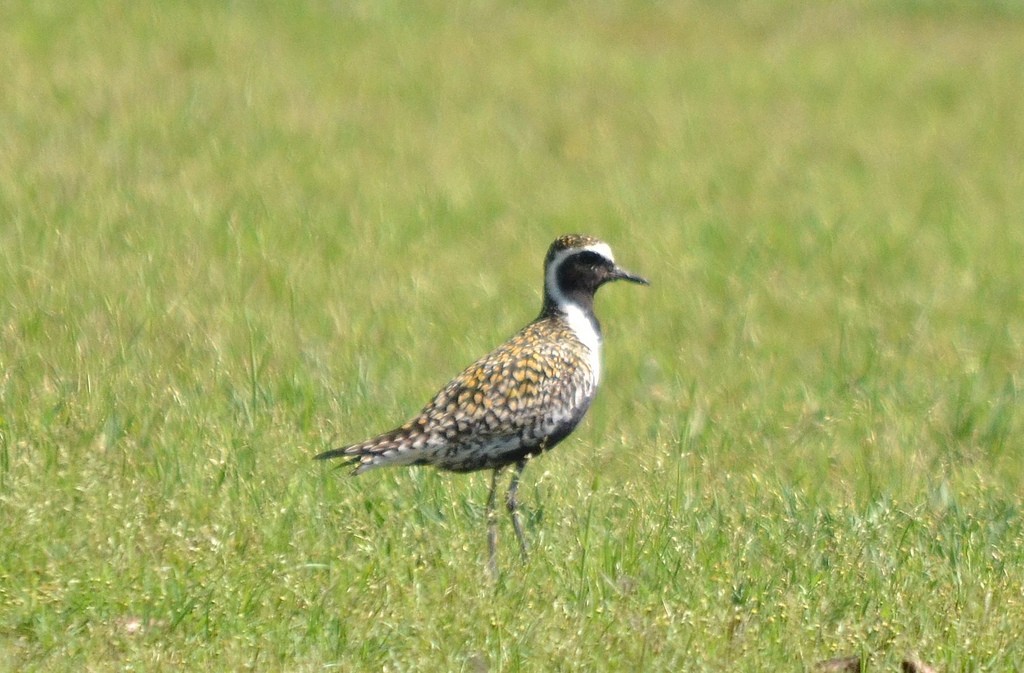Pacific Golden-plover
A species of Golden Plovers and Black-bellied Plover Scientific name : Pluvialis fulva Genus : Golden Plovers and Black-bellied Plover
Pacific Golden-plover, A species of Golden Plovers and Black-bellied Plover
Botanical name: Pluvialis fulva
Genus: Golden Plovers and Black-bellied Plover
Content
Description People often ask General Info
Description
The pacific Golden-plover is a small, migratory shorebird known for its golden-brown plumage and unique, elegant flight. Found across the Pacific rim, it inhabits grasslands, marshes, and coastal areas. During the non-breeding season, it feeds on insects and invertebrates. During the breeding season, it primarily feeds on small crustaceans. This bird is a strong flier, capable of covering vast distances during migration. 
Size
24 - 25 cm
Colors
Brown
Black
Yellow
White
Life Expectancy
7 years
Nest Placement
Ground
Clutch Size
4 eggs
Feeding Habits
Pacific Golden-plover primarily consume insects, employing a 'run-stop-peck' foraging method. They adapt to human presence, sometimes eating human food. Their varied diet includes mollusks, crustaceans, berries, seeds, and small vertebrates. They prepare for migration by consuming berries to gain fat.
Habitat
Pacific Golden-plover prefers arctic and subarctic tundra with dense vegetation for breeding, and selects habitats with short vegetation for essential foraging and predator vigilance. During migration, their habitat encompasses open regions such as fields, mudflats, and shores. In nonbreeding periods, pacific Golden-plover adapts to a variety of ecosystems, including pastures, coastal wetlands, and urban grassy areas.
Nest Behavior
The male pacific Golden-plover prepares multiple scrapes during courtship, selects one, lines it for the eggs, and may reuse the site for years. Both parents take part in caring for the eggs and offspring.
Nest Characteristics
Pacific Golden-plover nests are shallow depressions in tundra vegetation, lined with lichen, grass, moss, willow leaves, and twigs. They measure approximately 4.6 inches across, 1.3 inches deep, and often have a thicker lining than similar species.
Dite type
Aquatic invertebrate eater
People often ask
General Info
Feeding Habits
Bird food type
Sounds
Call
Recording location: India
Call
Recording location: United States
Song
Recording location: United States
Behavior
Pacific Golden-plover exhibit a blend of territorial and sociable habits, marked by their complex courtship rituals, such as the 'butterfly display'—a sky dance manifesting devotion. Males partake more in territorial defense, which extends around nesting sites. Both genders incubate and nurture hatchlings, transitioning to shrub-grass zones post-hatching for better protection and sustenance. As migration beckons, adults coalesce into flocks, while juveniles linger before following. In winter havens like Hawaii, pacific Golden-plover differentiate by occasionally asserting feeding territories. Nightfall ushers them into communal roosting.
Species Status
Not globally threatened.
